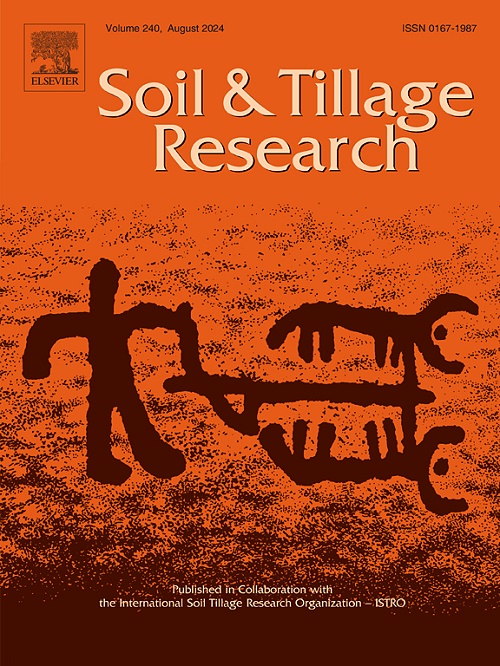Field traffic loads on a silty farm site cause shifting and narrowing of soil pore size distribution
IF 6.1
1区 农林科学
Q1 SOIL SCIENCE
引用次数: 0
Abstract
Agricultural soils are often affected by compaction due to machinery loads, which alters pore-size distribution and thus hydraulic properties. Up to date most studies on traffic and its impact on soil functions lack a detailed analysis of the effect on pore-size distribution (PSD). Our study aimed to understand how different machinery types, load levels, and moisture conditions impact the water retention curve (WRC) and PSD at various soil depths and field areas (headland or inner field). Eight field campaigns were conducted between 2016 and 2019 on a variety of sub-fields within one agricultural farm site with a clayey-silty soil. Undisturbed soil samples were collected before and after the harvest of winter wheat, silage maize, and sugar beet, and before and after digestate application. The van Genuchten model was fitted to the laboratory data, and parameters were interpreted to deduce WRC features. Additionally, the pore water pressure head at the pore-size density maximum (PSDmax) was determined and interpreted. The parameter responded to all types of field traffic and decreased with increased load, indicating a shift from coarser to finer pores. The parameter generally increased due to field traffic, suggesting a narrowed pore-size distribution. The θs parameter, associated with porosity, decreased in all trials, with the tendency of lowest values occurring after wheeling under moist conditions. Load-induced shifts in the PSDmax towards finer pores were obvious down to 50 cm depth, even with relatively low loads. Our findings indicate that the majority of vehicles utilized in conventional agricultural operations can lead to severe soil compaction.
求助全文
约1分钟内获得全文
求助全文
来源期刊

Soil & Tillage Research
农林科学-土壤科学
CiteScore
13.00
自引率
6.20%
发文量
266
审稿时长
5 months
期刊介绍:
Soil & Tillage Research examines the physical, chemical and biological changes in the soil caused by tillage and field traffic. Manuscripts will be considered on aspects of soil science, physics, technology, mechanization and applied engineering for a sustainable balance among productivity, environmental quality and profitability. The following are examples of suitable topics within the scope of the journal of Soil and Tillage Research:
The agricultural and biosystems engineering associated with tillage (including no-tillage, reduced-tillage and direct drilling), irrigation and drainage, crops and crop rotations, fertilization, rehabilitation of mine spoils and processes used to modify soils. Soil change effects on establishment and yield of crops, growth of plants and roots, structure and erosion of soil, cycling of carbon and nutrients, greenhouse gas emissions, leaching, runoff and other processes that affect environmental quality. Characterization or modeling of tillage and field traffic responses, soil, climate, or topographic effects, soil deformation processes, tillage tools, traction devices, energy requirements, economics, surface and subsurface water quality effects, tillage effects on weed, pest and disease control, and their interactions.
 求助内容:
求助内容: 应助结果提醒方式:
应助结果提醒方式:


